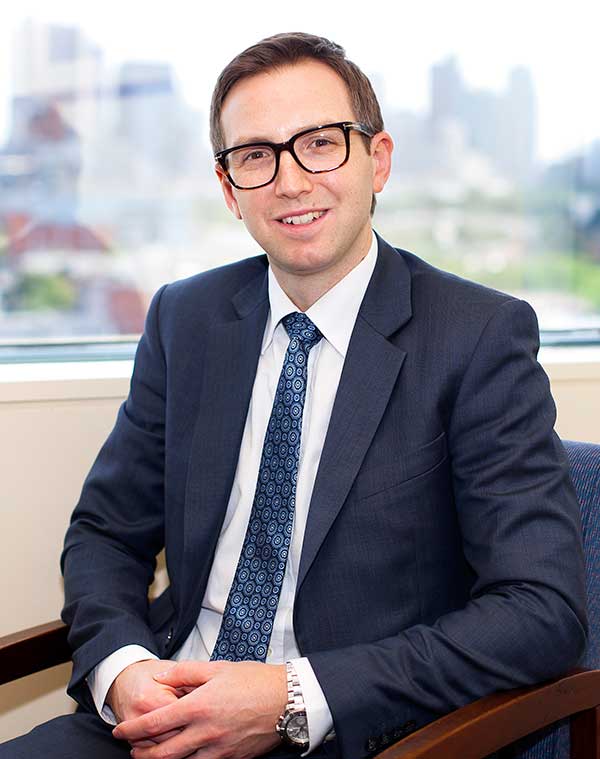Who is Dr. Domenic Robinson?
Dr. Domenic Robinson is a Melbourne trained Vascular and Endovascular Surgeon. He is an expert in the full spectrum of arterial and venous problems.
Domenic graduated from Monash University with honors in 2004. He performed at an exceptional standard and was awarded a number of prizes including the Australian Medical Association prize for the highest aggregate mark in the final year examinations. Domenic completed his internship at the Alfred Hospital in 2005 and then took a year off from medicine to travel around the world. Domenic returned to Australia and worked at St Vincent’s hospital in Sydney gaining experience in a broad range of surgical specialties.
Domenic entered into the Vascular Surgery training program inspired by this complex, challenging specialty, which has evolved to embrace state of the art technology to achieve better patient outcomes with fewer complications. During his Vascular Surgery training Domenic had the privilege of being trained by local and international experts in open and endovascular surgery. His training posts included Geelong Hospital, Queen Elizabeth Hospital, The Austin Hospital, St Vincent’s Hospital and Epworth Hospital.


Domenic is highly skilled in open vascular surgery and minimally invasive endovascular procedures. He has embraced the latest advances in technology and has incorporated innovative new techniques into his practice to achieve the best outcome for his patients. Domenic’s philosophy is to utilize the least invasive but most effective treatment option available. By utilising minimally invasive procedures conditions such as varicose veins, blocked or narrowed arteries and arterial aneurysms can be managed with shorter hospital stays and less risk of major complications. In situations where open surgery is the optimal treatment strategy Dr Robinson has the skills to perform these operations safely and effectively.Domenic prides himself on patient communication, which enables him to comprehensively assess your symptoms and the impact they are having on your quality of life. Your diagnosis will be explained in a manner that can be easily understood and questions are encouraged. Finally treatments options will be discussed including the risks and benefits of the various options. Management decisions are then made as a partnership, which ensures that there is a clear path to improvement in your health and wellbeing.
Domenic has developed a special interest and expertise in the following areas of vascular surgery:
Venous disease
- Minimally invasive treatment of varicose veins
- Intervention for acute deep venous thrombosis
- Stenting chronic venous occlusions
Aortic aneurysms
- Complex endovascular aortic aneurysm repair with branched and fenestrated stents
- Advanced endovascular techniques for limb salvage in critical limb ischaemia
- Comprehensive management of diabetic foot problems including wound care, revascularization, corrective surgery and reconstruction.
- Advanced endovascular techniques for limb salvage in critical limb ischaemia
Domenic is actively involved in clinical research and has published a number of research papers including the following:
- Aortic aneurysms – Screening, surveillance and referral. Aust Fam Physcian 2013; 42: 364-369.
- Non-aortic aneurysms – Natural history and recommendations for referral and treatment. Aust Fam Physcian 2013; 42: 370-374.
- Long term follow-up of last autogenous option arm vein bypass. ANZ J Surg 2013; 83:769-773.
- Endovascular repair of popliteal artery pseudoaneurysm with covered stent following total knee joint replacement. ANZ J Surg 2013; 83:491-492.
- Multiple pancreaticoduodenal artery aneurysms with a primary duodenal fistula. J Vasc Surg 2012; 56:1737.
- Migration of gentamicin beads into duodenum following treatment of primary infection of the aorta. European Journal of Vascular and Endovascular Surgery Extra 2012; 23:e34 – e36.
- Deficiencies in pathological reporting of colorectal cancer in Victoria. ANZ J Surg 2008: 78:796-799.
- In situ venous femoro-popliteal bypass – Atlas of Vascular and Endovascular Surgical Techniques 2016
- 17 years of experience with use of radial artery as a conduit for lower limb bypass surgery Eur J Vasc Endovasc Surg 2014; 48:80-87.
- Symptomatic free-floating carotid thrombus extending to the skull base Neurol Clin Pract 2014; 4;536-537.
- Quality of life and functional status after carotid revascualrisation: A systematic review and meta-analysis Eur J Vasc Endovasc Surg 2015; 49:634-645.
- Bilateral popliteal artery entrapment syndrome secondary to anomalous lateral heads of gastrocnemius ANZ J Surg 2015; in press.
